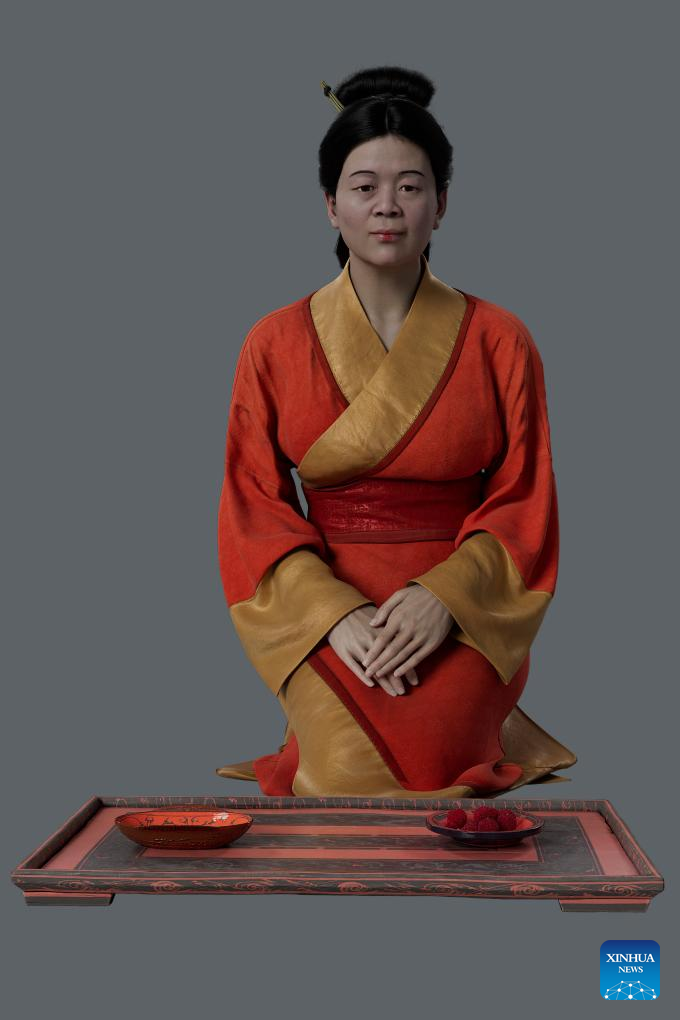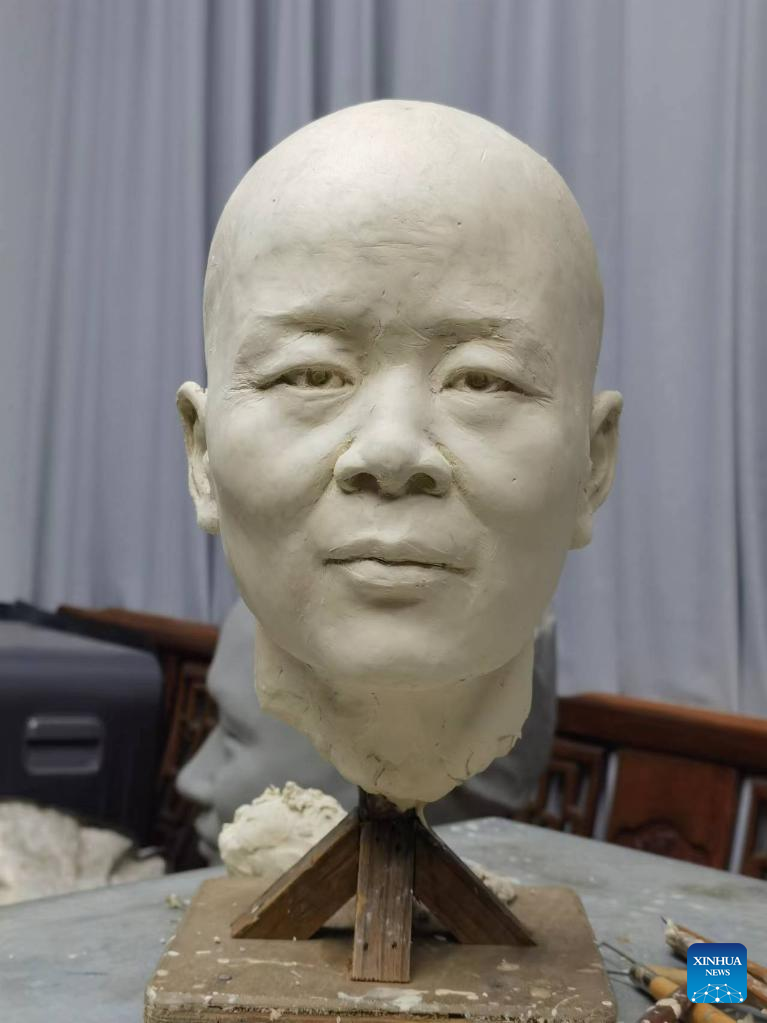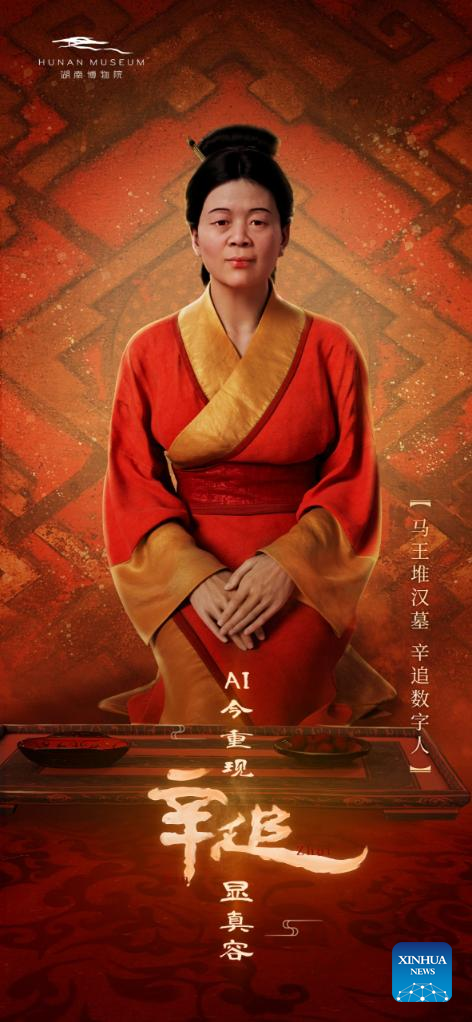
Technicians modify digital figures representing the likely look of Lady Xin Zhui at a technology company in Changsha, central China's Hunan Province, May 15, 2024. (Xinhua/Zhang Yujie)
CHANGSHA, May 17 (Xinhua) -- Lady Xin Zhui, a 2,200-year-old mummified aristocrat from central China, has been recreated in digital form, giving some idea of how she looked at age 35.
On Friday, the Hunan Museum in Changsha, central China's Hunan Province, released the image of a "3D digital figure" of Xin Zhui, one of the most famous wet mummies in the world.
The image consists of a seated figure of an amicable-looking woman with coiled hair and delicate makeup, which represents the likely look of the noblewoman at the age of 35. Also made public is an earlier digital recreation of the face at 50, Xin Zhui's approximate age of death.
The digital image was created based on X-ray scans of the skull conducted following the corpse's excavation about five decades ago, coupled with on-site observation and historical records, said Duan Xiaoming, director of the museum.
The museum launched the project to digitalize Xin Zhui last October. Leading experts on facial reconstruction were invited to produce a sculpture of her face, which helped a tech firm create a digital model of the 50-year-old lady. AI technology was then employed to create a rejuvenated version at the age of 35.
Lady Xin Zhui was the wife of the chancellor of the Changsha Kingdom during the Western Han Dynasty (202 BC-25 AD). Her body was retrieved in 1972 from a waterlogged coffin at the Mawangdui Tombs, where her husband and son are also interred.
"Upon excavation, the body of Xin Zhui was intact with soft skin, elastic muscles, eyelashes and visible fingerprints," Duan said. "But her face was so swollen and rotten that we couldn't make out how she would have looked before death."
In 2002, the museum tried to restore her face and created a wax statue, but the restoration work was "not very satisfying due to technological limitations," said Yu Yanjiao, director of the Research & Exhibition Center for Mawangdui Han Dynasty Tombs under the museum.
The latest project uses digital technologies to restore Xin Zhui's appearance in minute detail, including visible pores on her face, according to Changsha Digital Whale Technology Co., Ltd., the tech company that digitalized Xin Zhui.
The elderly version has also taken into account her health conditions, including the facial features of a cardiac patient, said Yuan Zhongbiao, a facial reconstruction expert who participated in the project.
"The discovery of whipworm ova and schistosoma ova from her body suggests that Xin Zhui was probably born into a lowly peasant family and had engaged in rice farming as a teenager," Yuan said.
The museum said the next step will be to equip the digital replica with AI technology that can engage in multilingual dialogue. This interactive AI is expected to be released in the second half of this year.
The restoration of Xin Zhui marks the latest in a series of efforts to restore the appearance of ancient Chinese people. In March, Chinese archaeologists published the reconstructed face of a low-ranking official back in the Qin Dynasty (221 BC-207 BC), based on skeletal remains and burial objects. ■

This image released by the Hunan Museum shows an earlier digital recreation representing the likely look of Lady Xin Zhui at the age of 50. (Xinhua)

This image released by the Hunan Museum shows a digital figure representing the likely look of Lady Xin Zhui at the age of 35. (Xinhua)

This file photo taken on Jan. 4, 2024 shows a head sculpture of Lady Xin Zhui based on facial reconstruction. (Photo by Yuan Zhongbiao/Xinhua)

This poster released by the Hunan Museum shows a digital figure representing the likely look of Lady Xin Zhui at the age of 35. (Xinhua)



